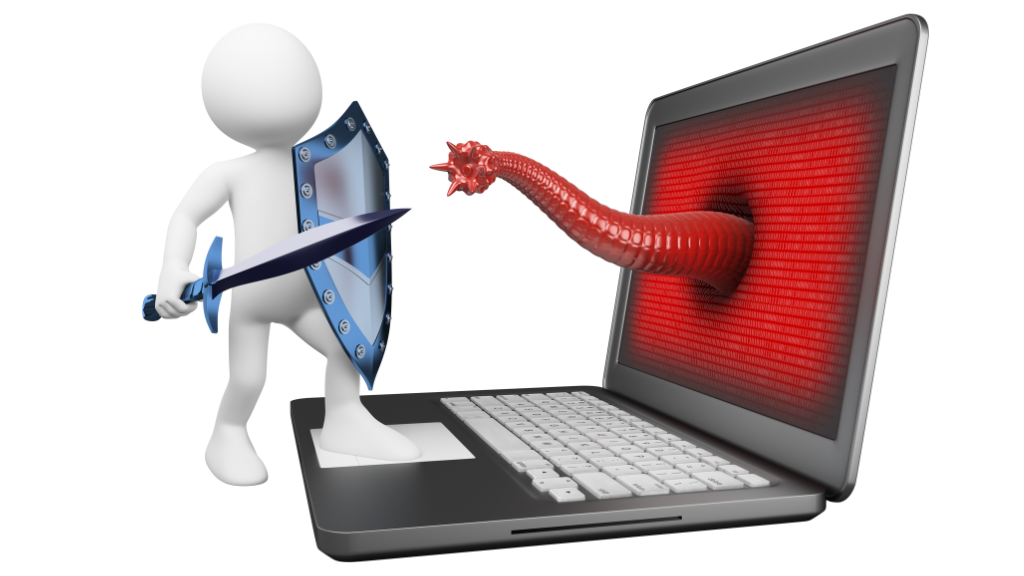In our increasingly digital age, we cannot overstate the importance of understanding the threats lurking online. From confidential company data to personal photographs, we store so much of what we value on our devices. The key to safeguarding it all? Knowing how to prevent malware attacks. This guide offers an in-depth look into malware, and its various types, and provides actionable steps to help you protect your devices.
How to Prevent Malware Attacks

It’s the million-dollar question: how do we keep our digital spaces secure from malware? Let’s delve right in.
Understanding Malware Basics
Before you can fight against malware, understanding what you’re up against is key.
- Definition: Malware, which is short for malicious software, is essentially a program crafted with the intent to infiltrate or damage a computer system, all while operating without the user’s knowledge or consent.
- Types of Malware: From trojans to worms and from ransomware to spyware, the list goes on and on. However, gaining familiarity with these can greatly aid in early detection and, ultimately, in their prevention.
Regular Software Updates
Hackers love outdated software. They’re often riddled with vulnerabilities.
- Stay Updated: It’s crucial to make sure that your operating system, applications, and antivirus software are consistently kept up to date.
- Automate: Whenever you can, it’s a good idea to enable automatic updates. By doing this, you ensure that you’re never inadvertently left unprotected.
Implement Robust Firewalls
Firewalls act as barriers between malware threats and your computer.
- Choose Wisely: It’s wise to invest in a high-quality firewall solution. After all, sometimes the default just doesn’t cut it.
- Maintain: Make a habit of regularly checking and updating your firewall rules. After all, it’s vital to ensure it remains constantly activated.
Exercise Caution with Downloads
Not everything online is what it seems. And when in doubt, don’t download.
- Source Matters: Always download software from reputable sites.
- Be Wary of Email Attachments: Especially if they’re from unknown senders.
Enhance Password Protocols
Your passwords are the keys to your digital kingdom. Protect them fiercely.
- Strong Passwords: When creating passwords, always incorporate a blend of characters, numbers, and symbols for enhanced security.
- Regular Changes: It’s a good practice to refresh your passwords every 3-6 months.
- Avoid Repetition: Always avoid using the same password on multiple platforms; it’s a risk not worth taking.
Back-Up Regularly

In case malware does breach your defenses, backups can save the day.
- Cloud & Physical: For optimal data storage, it’s best to utilize a blend of cloud storage and external hard drives.
- Schedule Backups: Whether it’s daily, weekly, or monthly, the frequency should align with your specific needs.
Educate & Train
Ignorance is malware’s best friend. Education is the antidote.
- Stay Informed: It’s essential to stay informed about the most recent malware trends and looming threats.
- Train Staff: As a business, it’s crucial to make sure your staff understands the significance of cybersecurity.
Invest in Quality Antivirus Software
It’s the frontline defense against malware attacks.
- Do Your Research: Not all antivirus software is made the same way. It’s essential to select one that aligns with your specific needs.
- Keep it Active: Always ensure it’s turned on and regularly scanned.
Android Malware Removal
As the use of smartphones continues to rise, the threat of Android malware has consequently become a more pressing concern. Worried your Android device might be infected? Here’s how to clean your phone from viruses:
Safe Mode: When you boot in safe mode, it helps to stop third-party apps, including potential malware, from operating.
Use a Reliable Antivirus: To bolster your security, first install a reputable mobile antivirus app and then, crucially, run a scan.
Manual Removal: First and foremost, identify any suspicious apps, and then make sure to uninstall them.
Factory Reset: If all else fails, a full reset will clean your device, but remember to back up your important data first!
Malware Types
In order to truly grasp how to defend against malware, it’s essential that we first delve deeper into its myriad forms. There are about 15 types of malware, even more. The following are some of the examples.
Malware Attacks Examples

- Viruses: Just like a biological virus, these programs attach themselves to clean files and infect other files.
- Worms: They exploit vulnerabilities to spread across networks.
- Trojans: These disguise themselves as legitimate software but deliver their malicious payload when executed.
- Ransomware: This malware type locks down a user’s files and data, demanding payment for their release.
- Adware: Though not always malicious in nature, aggressive adware can undermine user experience.
- Spyware: This hides in the background, collecting information without the user’s knowledge.
Conclusion
Preventing malware attacks has become paramount for both individuals and businesses. Being proactive is the key. Additionally, a culture of cybersecurity awareness, where one is skeptical of unsolicited emails and vigilant about downloads, can thwart a significant number of potential threats. Yet, as malware continues to evolve, so must our defense strategies. For a comprehensive protection approach, seeking expertise beyond in-house resources becomes crucial.
For those serious about bolstering their cybersecurity defenses, it’s worth considering partnering with professionals in the field. Nextdoorsec, a renowned cybersecurity firm, offers tailored solutions to meet the unique challenges faced by different entities.
FAQs
1. What are some examples of malicious code in Android devices?
Just like PCs, Android devices are susceptible to a variety of malware types, from ransomware to trojans. Examples include:
- Banking Trojans: These disguise themselves as genuine apps, trying to steal banking credentials.
- Spyware: This surreptitiously spies on your activities, sending data back to its origin.
2. How can malware be prevented against?
Malware can be prevented by using updated antivirus and anti-malware software, being cautious with email attachments and downloads, regularly updating software and operating systems, avoiding suspicious websites, and educating oneself about the latest malware threats.
3. What are the six steps to prevent malware?
- Install and regularly update antivirus and anti-malware software.
- Apply software and OS patches promptly.
- Avoid clicking on unknown email attachments or links.
- Use strong, unique passwords for all accounts.
- Backup important data regularly.
- Stay informed about recent malware threats and scams.
4. What are the best defenses against malware?
The best defenses against malware include using a robust antivirus and anti-malware program, employing a firewall, keeping all software and the OS updated, practicing safe browsing habits, regularly backing up data, and educating oneself and employees (for businesses) about cybersecurity best practices.
5. What are four (4) malware protection guidelines?
- Regularly update and patch software and operating systems.
- Use a reputable antivirus and antimalware solution.
- Avoid downloading attachments or clicking links from unknown sources.
- Educate and train users on security best practices and phishing awareness.
6. What are the three defense mechanisms against malware?
- Behavior-based detection, which identifies unusual actions on a system.
- Signature-based detection, which identifies known malicious code patterns.
- Heuristic analysis, which detects new, previously unknown viruses or new variants of known viruses by examining code behaviors and properties.
7. How to prevent malware attacks on Android?
- Only download apps from the official Google Play Store.
- Regularly update your Android OS and apps.
- Install a reputable mobile antivirus application.
- Avoid clicking on suspicious links or downloading attachments from unknown sources.
- Review app permissions before installation.
8. How to prevent malware attacks on iOS?
- Only download apps from the official Apple App Store.
- Regularly update your iOS and apps.
- Avoid jailbreaking your device.
- Be cautious of suspicious links and attachments in emails or messages.
- Use strong, unique passcodes and enable Face or Touch ID.
9. How to prevent malware attacks on websites?
- Use strong, unique passwords for website admin areas and databases.
- Regularly update and patch website platforms and plugins.
- Install a web application firewall (WAF).
- Monitor website traffic for suspicious activities.
- Back up your website data regularly.
10. How to protect your computer from malware attacks?
- Install and regularly update a reputable antivirus and antimalware software.
- Regularly update your operating system and all software.
- Avoid downloading files or clicking links from unknown sources.
- Use strong, unique passwords for all accounts.
- Enable a firewall and consider using a virtual private network (VPN) when browsing.






0 Comments